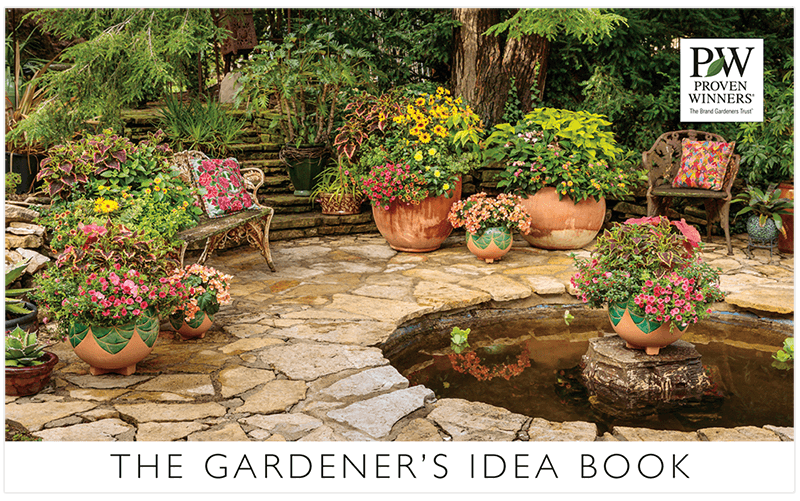9 Great Landscape Plants - Graceful Grasses® King Tut®
King Tut® is versatile - working great in both containers and landscapes and is good when planted in ponds, damp soil or with normal moisture.
I really wanted to call this series of articles "9 Plants Every Gardener Should Try in the Landscape," but this seemed a bit long for a title. Whatever you call them, these 9 plants should be great in landscapes in almost any climate. They were chosen to be heat tolerant, to need limited to no supplemental water and to be easy to care for with no deadheading needed. I've grown them all (most of them repeatedly) and love them!
- Artist® Blue Ageratum
- Lo & Behold® 'Blue Chip Jr.' Buddleia
- Senorita Rosalita® Cleome
- Graceful Grasses® King Tut® Cyperus
- Diamond Frost® Euphorbia
- Sweet Caroline Raven™
- Luscious® Citrus Blend™ Lantana
- Snow Princess® Lobularia
- Supertunia® Vista Bubblegum Petunia
It would be hard not to be enchanted with Cyperus Graceful Grasses® King Tut®, after all what's not to love? To me King Tut® looks like a plant that Dr. Seuss would have created or something from the time of the dinosaurs. If there's a child in your life you would like to  get interested in gardening I think King Tut® would be a great plant to use.
get interested in gardening I think King Tut® would be a great plant to use.
If you are going to plant him in a container by himself I suggest using a container with no drainage holes or plugging existing drainage holes. While doing fine in normal moisture, he is a water lover and I see no reason not to give him a watery environment if he is planted by himself.
I used a galvanized metal bushel basket as the pot. The photo at left is one month after planting a 4.25 inch pot of King Tut®. The photo below and to the right shows it in September, four months later. As you can see, he grows very fast, easily reaching six feet or more in a single season. He's a dramatic plant to add to any garden.
King Tut® will also work well in large combination planters. If you are using him in a combination, make sure you are using a large pot (two feet across or more), he will have a tendency to crowd out other plants if he isn't given enough space to grow. When planted in a combination use a pot with drainage holes and maintain normal moisture.
King Tut® will also perform well when planted in the landscape. If you are looking for a large, dramatic plant to use in your pond or other water feature King Tut® is an excellent choice.
 However, he can also be used in regular garden beds. When planted in the garden it will best to keep even moisture, although we have had some reports of well-established King Tut® plants doing surprisingly well with dry conditions. Even moisture will be a safer bet though. The photo below and to the left was taken in July at the Daniel A Seguin garden in Quebec. The garden has a program where they allow visitors to stick flags by the plants they like the best. You can see a sea of lime-green flags stuck in the ground by King Tut®.
However, he can also be used in regular garden beds. When planted in the garden it will best to keep even moisture, although we have had some reports of well-established King Tut® plants doing surprisingly well with dry conditions. Even moisture will be a safer bet though. The photo below and to the left was taken in July at the Daniel A Seguin garden in Quebec. The garden has a program where they allow visitors to stick flags by the plants they like the best. You can see a sea of lime-green flags stuck in the ground by King Tut®.
King Tut® will do best with fertilizer, but doesn't need a lot of feed to perform well. He doesn't need to be deadheaded and overall is quite easy to care for. He does best in full sun and according to our grass expert isn't a candidate to be overwintered indoors - I keep asking him hoping he'll change his mind, but no luck so far!
You do need to watch one thing. King Tut® does not do well when very dry. If he gets too dry the stems will kink over. Once a stem kinks over it will not straighten back up, if it droops, you can water the plant and it willreturn upright, but kinking over isn't something that it can recover from. Water your plant as soon as you can, trim off the kinked stem and compost it or use it as a cut flower. The stems don't all kink over at once, so some good stems should remain and new stems will grow from the base of the plant.
With King Tut® being so tall, you might worry about the wind causing it to kink over. I've had it get windy enough to blow the whole planter over, but it never actually broke any of the stems. I do think he will work well in windy locations.
For me King Tut® was also surprisingly cold tolerant. He looked good in my garden (in central Missouri) through Thanksgiving. We got a hard frost after Thanksgiving that finally turned him crunchy and consigned him to the compost pile. He was great from May through November. That's a performance I'll be happy to have in my garden year after year. In fact, I've planted him again this year.
Sun/Shade:Prefers full sun - a minimum of 6 hours of direct sun a day
Height:Tall, 48 to 72 inches
Habit:Upright, Thriller - Used either in the back or middle of a container - Usually a taller item that adds height and drama to the container
Bloom Time:Grown for foliage




